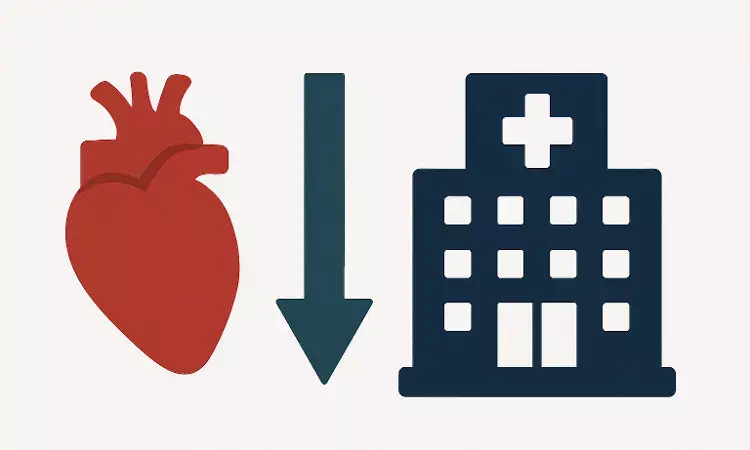- Home
- Medical news & Guidelines
- Anesthesiology
- Cardiology and CTVS
- Critical Care
- Dentistry
- Dermatology
- Diabetes and Endocrinology
- ENT
- Gastroenterology
- Medicine
- Nephrology
- Neurology
- Obstretics-Gynaecology
- Oncology
- Ophthalmology
- Orthopaedics
- Pediatrics-Neonatology
- Psychiatry
- Pulmonology
- Radiology
- Surgery
- Urology
- Laboratory Medicine
- Diet
- Nursing
- Paramedical
- Physiotherapy
- Health news
- Fact Check
- Bone Health Fact Check
- Brain Health Fact Check
- Cancer Related Fact Check
- Child Care Fact Check
- Dental and oral health fact check
- Diabetes and metabolic health fact check
- Diet and Nutrition Fact Check
- Eye and ENT Care Fact Check
- Fitness fact check
- Gut health fact check
- Heart health fact check
- Kidney health fact check
- Medical education fact check
- Men's health fact check
- Respiratory fact check
- Skin and hair care fact check
- Vaccine and Immunization fact check
- Women's health fact check
- AYUSH
- State News
- Andaman and Nicobar Islands
- Andhra Pradesh
- Arunachal Pradesh
- Assam
- Bihar
- Chandigarh
- Chattisgarh
- Dadra and Nagar Haveli
- Daman and Diu
- Delhi
- Goa
- Gujarat
- Haryana
- Himachal Pradesh
- Jammu & Kashmir
- Jharkhand
- Karnataka
- Kerala
- Ladakh
- Lakshadweep
- Madhya Pradesh
- Maharashtra
- Manipur
- Meghalaya
- Mizoram
- Nagaland
- Odisha
- Puducherry
- Punjab
- Rajasthan
- Sikkim
- Tamil Nadu
- Telangana
- Tripura
- Uttar Pradesh
- Uttrakhand
- West Bengal
- Medical Education
- Industry
Sotatercept Demonstrates Major Risk Reduction in Advanced PAH: ZENITH Trial

Sotatercept significantly reduced the risk of all-cause mortality, lung transplantation, or ≥24-hour hospitalization for worsening pulmonary arterial hypertension by 76% in high-risk patients on maximally tolerated background therapy, a new study has reported.
In a pivotal advance for patients with pulmonary arterial hypertension (PAH) at high risk of death, the ZENITH phase 3 trial has demonstrated that add-on sotatercept therapy significantly reduces major clinical events including death,lung transplantation, and PAH-related hospitalization. Published in the New England Journal of Medicine (May 2025 issue), the trial provides compelling evidence for the use of sotatercept as a disease-modifying agent in a population with WHO functional class III or IV PAH and a REVEAL Lite 2 risk score ≥9.
In this double-blind, placebo-controlled trial, 172 patients already receiving the maximum tolerated dose of background double or triple therapy were randomized 1:1 to receive sotatercept (initiated at 0.3 mg/kg and titrated to 0.7 mg/kg every 3 weeks) or placebo. The primary endpoint was a time-to-first-event composite of all-cause mortality, lung transplantation, or hospitalization ≥24 hours for worsening PAH.
Results were striking: 17.4% of patients in the sotatercept arm experienced a primary event compared to 54.7% in the placebo group. This corresponds to a 76% relative risk reduction (hazard ratio 0.24; 95% CI, 0.13–0.43; P<0.001). Component outcomes showed consistent trends—hospitalizations were reduced from 50.0% to 9.3%, deaths from 15.1% to 8.1%, and lung transplantations from 7.0% to 1.2% in placebo vs sotatercept arms, respectively.
Secondary endpoints favored sotatercept across multiple clinically relevant measures. Transplantation-free survival showed a hazard ratio of 0.34 (95% CI, 0.15–0.78). Sotatercept significantly improved the REVEAL Lite 2 risk score by a median of –3.0 points at week 24 compared to no change in the placebo group. NT-proBNP levels were reduced by a median of 1233 pg/mL (vs an increase of 255 pg/mL in the placebo group), and pulmonary vascular resistance decreased by 157 dyn·s·cm⁻⁵ (vs an increase of 47 dyn·s·cm⁻⁵ with placebo).
Functionally, 55.8% of patients on sotatercept improved in WHO class versus 27.9% on placebo. The 6-minute walk distance improved by a median of 45.4 meters with sotatercept and declined by 5.4 meters in the placebo group (difference: +63 meters; 95% CI, 23.2–102.7).
The trial was halted early following a prespecified interim analysis due to overwhelming efficacy, a rare occurrence in advanced PAH trials, particularly given that enrolled patients were already on optimized therapy.
Safety data were largely consistent with prior studies. Epistaxis (44.2%), telangiectasia (25.6%), and gingival bleeding (10.5%) were more frequent with sotatercept, likely reflecting vascular remodeling mechanisms. Serious adverse events occurred in 53.5% of sotatercept patients versus 64.0% in the placebo group, and discontinuation due to adverse events was observed only in the placebo arm.
These findings position sotatercept as a transformative addition to the therapeutic arsenal in advanced PAH. By targeting activin signaling pathways rather than relying solely on vasodilatory mechanisms, sotatercept directly addresses pulmonary vascular remodeling, offering durable improvements in risk profile, hemodynamics, and hard clinical outcomes.
Reference: Humbert M, McLaughlin VV, Badesch DB, et al.; ZENITH Trial Investigators. Sotatercept in patients with pulmonary arterial hypertension at high risk for death. N Engl J Med. 2025 Mar 31. PMID: 40167274. doi:10.1056/NEJMoa2415160
Meghna A Singhania is the founder and Editor-in-Chief at Medical Dialogues. An Economics graduate from Delhi University and a post graduate from London School of Economics and Political Science, her key research interest lies in health economics, and policy making in health and medical sector in the country. She is a member of the Association of Healthcare Journalists. She can be contacted at meghna@medicaldialogues.in. Contact no. 011-43720751


